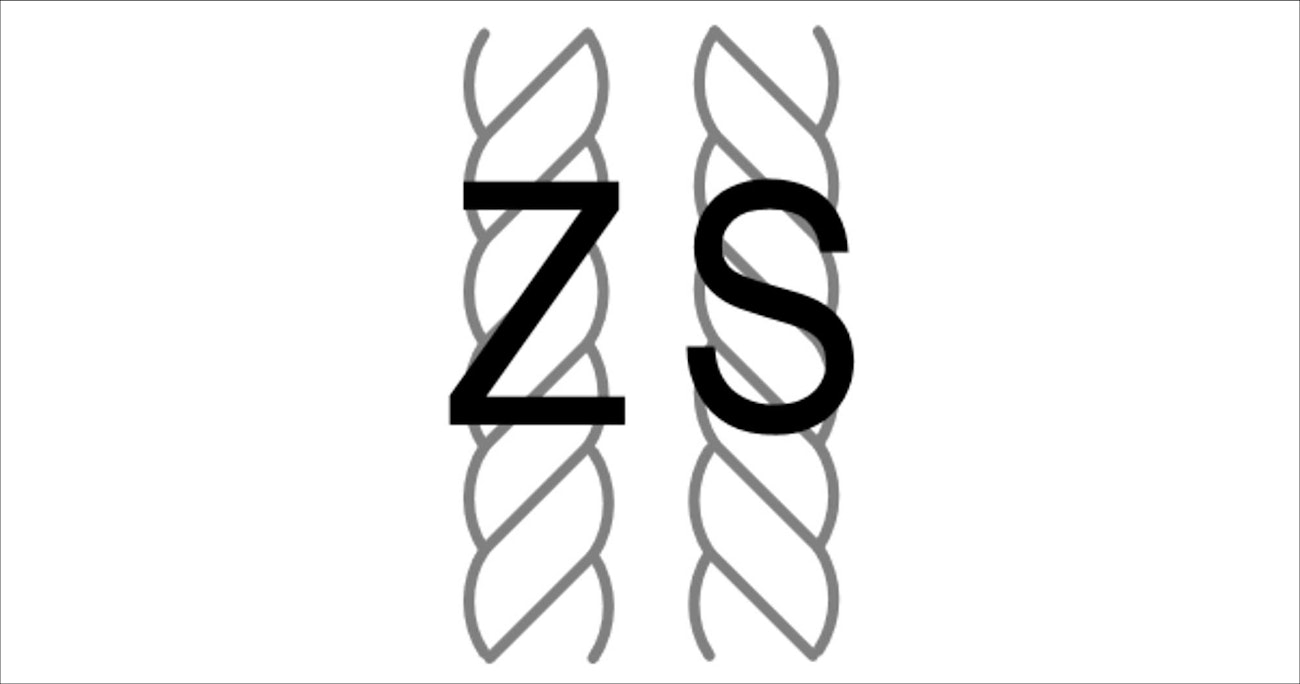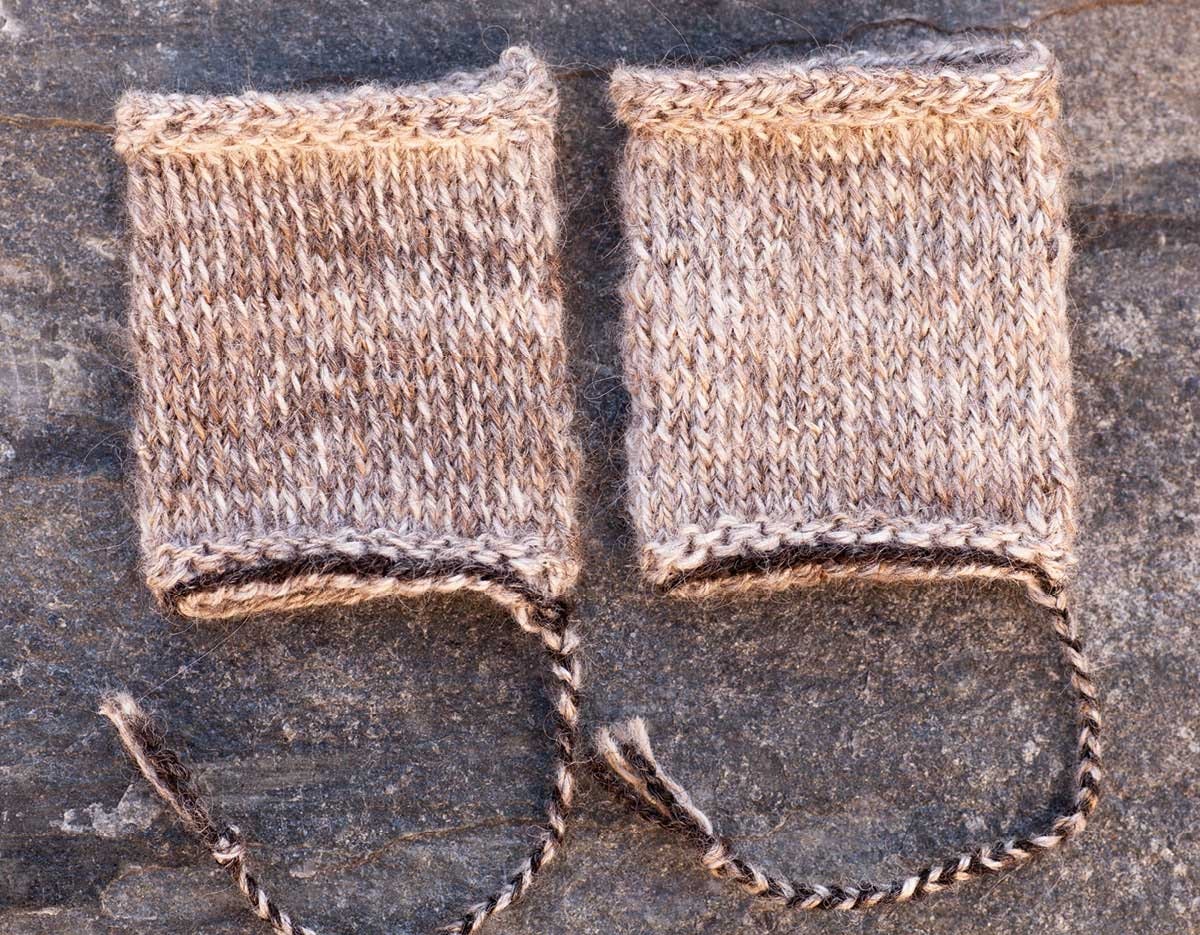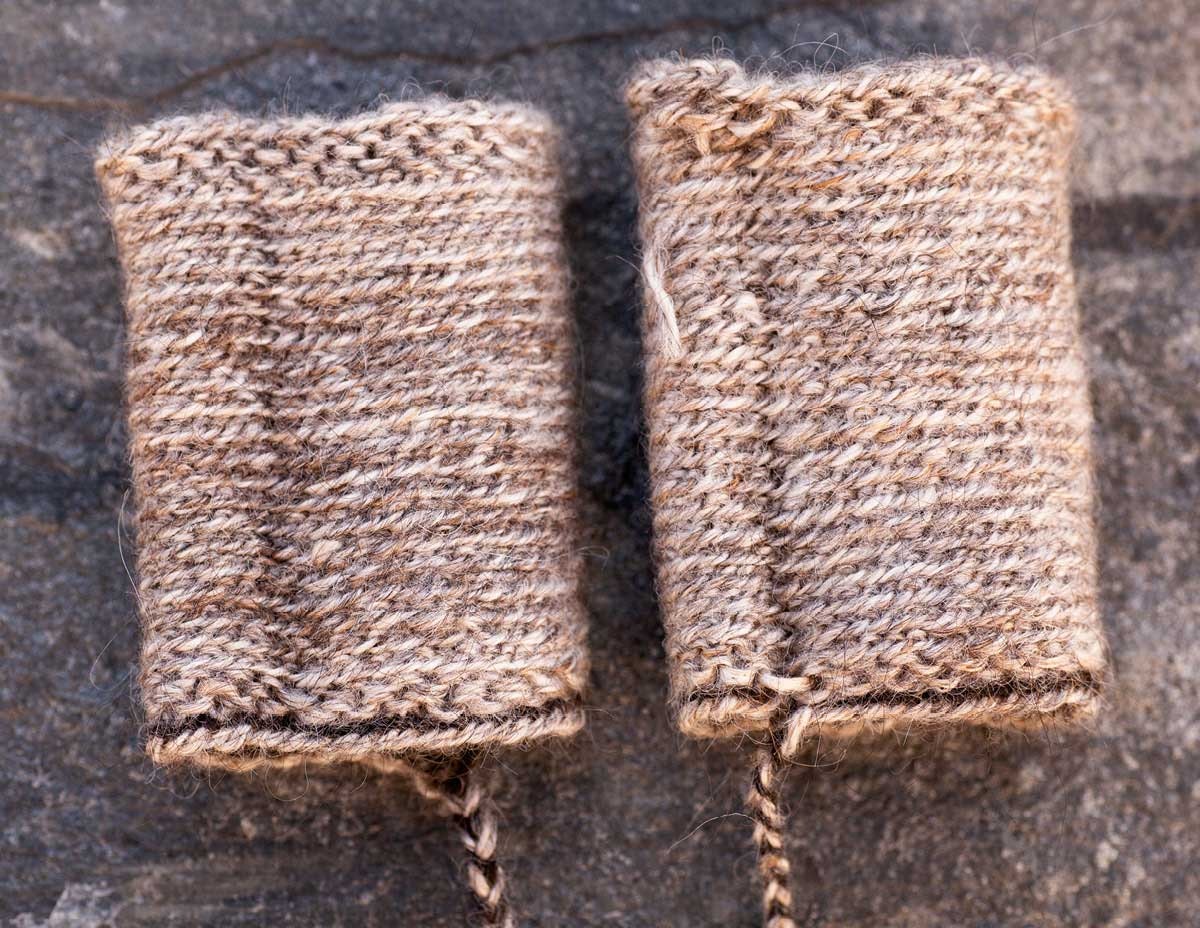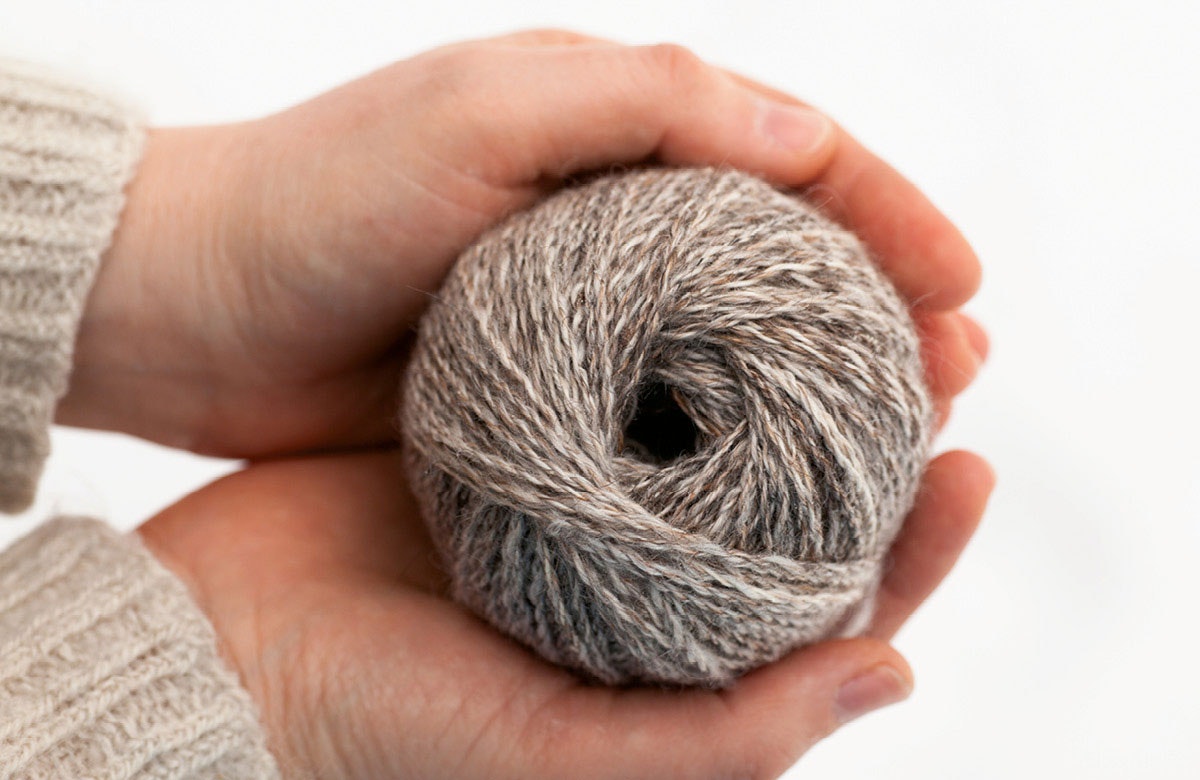Subscriber Exclusive
Strong and Sturdy: Two-end Knitting Condensed
Also known as tvåändsstickning, this technique for durable knitting works best with Z-twist yarn.
Also known as tvåändsstickning, this technique for durable knitting works best with Z-twist yarn. <a href="https://farmfiberknits.com/strong-and-sturdy-two-end-knitting-condensed/">Continue reading.</a>
https://farmfiberknits.com/cdn-cgi/image/format=auto/https://www.datocms-assets.com/101500/1700503423-p9-header.jpg?auto=format&w=900
One of my favorite knitting techniques is two-end knitting. It is slow, but very enjoyable, like a choreographed dance. Two-end knitting is an old technique in Sweden and other Scandinavian countries. The knitter alternates between two ends of yarn, usually from both ends of a center-pull ball, while twisting them around each other between stitches, creating horizontal ridges on the wrong side of the project.
Everlasting Stitches
A two-end-knitted fabric is strong and sturdy, firm but not bulky. The combination of the smooth vertical stitches on the right side and the twisted and horizontal texture of the wrong side makes a dense grid-like structure that withstands the elements. The fact that the working yarn changes every other stitch also makes a two-end-knitted garment more durable. Add fulling as a finishing treatment, common for two-end-knitted items, and it is easy to understand why these garments last a lifetime. Twined knitting has a rich history in Sweden and Norway, where it was used for sturdy work mittens with the twined ridges on the outer sides of the mittens.
SUBSCRIBER EXCLUSIVE
One of my favorite knitting techniques is two-end knitting. It is slow, but very enjoyable, like a choreographed dance. Two-end knitting is an old technique in Sweden and other Scandinavian countries. The knitter alternates between two ends of yarn, usually from both ends of a center-pull ball, while twisting them around each other between stitches, creating horizontal ridges on the wrong side of the project.
Everlasting Stitches
A two-end-knitted fabric is strong and sturdy, firm but not bulky. The combination of the smooth vertical stitches on the right side and the twisted and horizontal texture of the wrong side makes a dense grid-like structure that withstands the elements. The fact that the working yarn changes every other stitch also makes a two-end-knitted garment more durable. Add fulling as a finishing treatment, common for two-end-knitted items, and it is easy to understand why these garments last a lifetime. Twined knitting has a rich history in Sweden and Norway, where it was used for sturdy work mittens with the twined ridges on the outer sides of the mittens. [PAYWALL]
 Left: The right side of twined knitting looks just like regular knitting. Right: The wrong side has horizontal ridges where the two yarn ends have been twined.
Left: The right side of twined knitting looks just like regular knitting. Right: The wrong side has horizontal ridges where the two yarn ends have been twined.
A two-end-knitted fabric has very little elasticity and behaves more like a woven fabric than a knitted one. The needle sizes for two-end knitting are typically smaller than you might expect to use with the same yarn weight with other knitting techniques. I’m fascinated that I can knit a garment with such fine needles that results in such a strong and durable fabric.
A Quick Plying Primer
Whether it’s handspun or millspun, most yarn is made up of two or more strands of yarn that are individually twisted in one direction and then twisted together in the opposite direction. If the last twist direction is counterclockwise, we refer to it as S twist, because the angle of the twist yarn follows the sloping center of the letter S.
 How does yarn twist direction make a difference in the finished item? Illustration public domain courtesy of Wikipedia.org
How does yarn twist direction make a difference in the finished item? Illustration public domain courtesy of Wikipedia.org
S- vs Z-Ply for Two-end Knitting
Commercial knitting yarns are usually spun clockwise (Z) and plied counterclockwise (S). For most people, this will create a (one-end) knitted fabric that is balanced, at least if the knitting is done from right to left. How you hold your yarn can also impact whether S- or Z-plied yarns are the best fit for you.
So why was the yarn for two-end knitting plied Z? To find my answer to this and understand it physically, I created two two-end knitted swatches, one with Z-plied and the other with S-plied yarn. The first thing I noticed was that the knitting process was a lot more relaxed when I knitted with the Z-plied yarn. Since the two yarns are constantly twisted in one direction during knitting, the yarns will both overtwist and untwist. The untwisting occurs in my hand, closest to my work, and the overtwisting happens closer to the ball. After working for a while, I need to allow the yarns to get balanced again.
 The Z-plied yarn swatch (left) feels smoother than the S-plied yarn swatch (right). The left halves of the S-plied stitches are a bit tilted and higher than the right halves of the stitches.
The Z-plied yarn swatch (left) feels smoother than the S-plied yarn swatch (right). The left halves of the S-plied stitches are a bit tilted and higher than the right halves of the stitches.
However, when two-end knitting with the S-plied yarn, I need to allow the yarn to balance a lot sooner than with the Z-plied yarn. The overtwisting occurs closer to the work, and the yarn gets very kinked up in my hand. After a short while, I can’t get my finger between the yarns to pick up one strand for the next stitch.
 Reverse sides of twined-knitted swatches. The swatch with Z-plied yarn (left) feels smoother than the swatch with S-plied yarn (right). I can feel the horizontal structure on the purl side of the Z-plied swatch, while I can feel each individual ridge on the inside of the S-plied swatch. Twined knitting with S-plied yarn is thus quite uncomfortable and results in a fabric that feels and looks bulkier.
Reverse sides of twined-knitted swatches. The swatch with Z-plied yarn (left) feels smoother than the swatch with S-plied yarn (right). I can feel the horizontal structure on the purl side of the Z-plied swatch, while I can feel each individual ridge on the inside of the S-plied swatch. Twined knitting with S-plied yarn is thus quite uncomfortable and results in a fabric that feels and looks bulkier.
When I feel the structure of the swatches, the Z-plied swatch is smoother and the S-plied has more bulk. On the right side of the swatch, the S-plied stitches are a bit tilted so that the left half of the stitch is higher than the right half, creating surface texture.
On the wrong side, I can feel the individual ridges of twisted stitches for the S-plied yarn, while the wrong side of the Z-plied swatch feels smoother, and I only feel the horizontal direction of the ridges.
Where to find Z-plied yarn
Commercial Z-plied yarns are hard to find today. Karin Kahnlund is an authority in the subject: She has a master craftsperson’s certificate in knitting and specializes in and teaches two-end knitting. Karin also sells Z-plied yarn for two-end knitting from Wålstedts textilverkstad and Båvens spinnhus. The yarns are spun especially for Karin’s purposes.
 A Z-plied yarn for twined knitting spun from Swedish Värmland lamb fleece
A Z-plied yarn for twined knitting spun from Swedish Värmland lamb fleece
It is of course possible to two-end knit with an S-plied yarn. But it will not be enjoyable, and knitting should definitely be enjoyable. If you can’t find a Z-plied yarn for two-end knitting, consider learning how to spin and make your own. That is, in my experience, highly enjoyable.
Editor’s note: Z-plied yarns are easier to find from small mills and European sources. Try Ullcentrum, Wooldreamers, or even Lopi, Noro and Brown Sheep Top of the Lamb and Lanaloft yarns, which have a final Z twist.
Practice two-end knitting with Josefin’s design, Heartwarming Mitts, in the Farm & Fiber Knits Library.
Resources
Dandanell, Birgitta, Ulla Danielsson, and Kerstin Ankert (eds). Tvåändsstickat. Värnamo: Dalarnas Museum, 2013.
Dandanell, Birgitta, and Ulla Danielsson. Twined Knitting: A Swedish Folkcraft Technique (English and Swedish edition). Loveland, Colorado: Interweave Press, 1989.
Westman, Berit. Tvåändsstickning: Grunderna. [Insjön]: Sätergläntan, Hemslöjdens gård, 2004.
Kahnlund, K. Tvåändsstickning. Göteborg: Hemslöjdens förlag, 2019.
Josefin Waltin is a knitter, weaver, and occasional dyer. She teaches spinning, both online and in person; publishes instructional and documentary-style videos; and maintains a blog from her home in Sweden.


 Left: The right side of twined knitting looks just like regular knitting. Right: The wrong side has horizontal ridges where the two yarn ends have been twined.
Left: The right side of twined knitting looks just like regular knitting. Right: The wrong side has horizontal ridges where the two yarn ends have been twined.  How does yarn twist direction make a difference in the finished item? Illustration public domain courtesy of Wikipedia.org
How does yarn twist direction make a difference in the finished item? Illustration public domain courtesy of Wikipedia.org  The Z-plied yarn swatch (left) feels smoother than the S-plied yarn swatch (right). The left halves of the S-plied stitches are a bit tilted and higher than the right halves of the stitches.
The Z-plied yarn swatch (left) feels smoother than the S-plied yarn swatch (right). The left halves of the S-plied stitches are a bit tilted and higher than the right halves of the stitches.  Reverse sides of twined-knitted swatches. The swatch with Z-plied yarn (left) feels smoother than the swatch with S-plied yarn (right). I can feel the horizontal structure on the purl side of the Z-plied swatch, while I can feel each individual ridge on the inside of the S-plied swatch. Twined knitting with S-plied yarn is thus quite uncomfortable and results in a fabric that feels and looks bulkier.
Reverse sides of twined-knitted swatches. The swatch with Z-plied yarn (left) feels smoother than the swatch with S-plied yarn (right). I can feel the horizontal structure on the purl side of the Z-plied swatch, while I can feel each individual ridge on the inside of the S-plied swatch. Twined knitting with S-plied yarn is thus quite uncomfortable and results in a fabric that feels and looks bulkier.  A Z-plied yarn for twined knitting spun from Swedish Värmland lamb fleece
A Z-plied yarn for twined knitting spun from Swedish Värmland lamb fleece